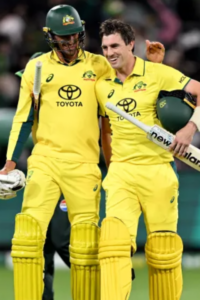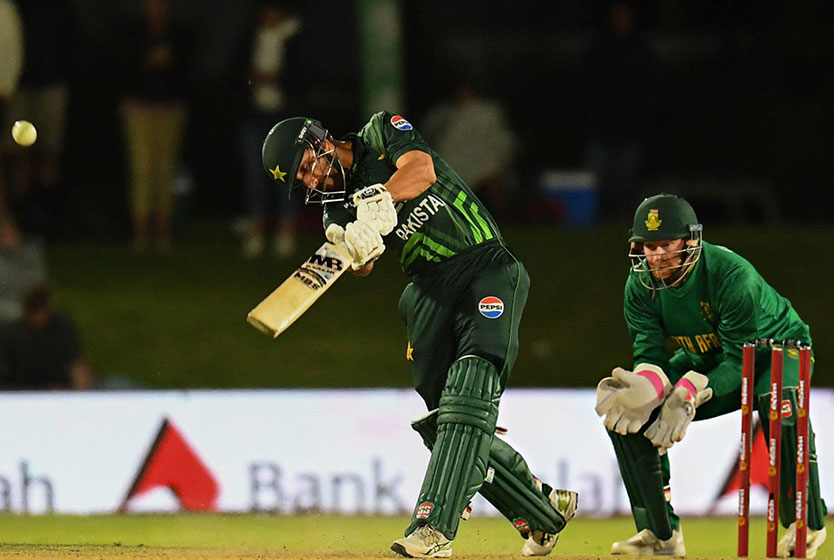
The Prospect of Drop-in Pitches in Pakistan
The PCB has signed an MOU with the Arif Habib Group for the installation of two drop-in pitches in Pakistan.
What Is a Drop-in Pitch?
A drop-in pitch is a pitch that is prepared outside the ground where it is meant to be used. Then, it is later dropped into the stadium before it is intended to be used. Thus the name “drop-in pitch.” The primary purpose of a drop-in pitch is to allow venues to be used for other sports and activities. Therefore, it makes a venue much more versatile.
A drop-in pitch is prepared on a tray-like surface, and it has hooks attached to it. A specialized machine made for transporting these pitches then connects to the hooks and lifts the whole pitch. It is then transported to the desired venue, and the crane-like machine drops the pitch into the ground.
A Forced Introduction?
Drop-in pitches are not a new phenomenon in the cricketing world. They were first introduced to the world of cricket during the Kerry Packer rebel cricket series in Australia. The rebel series, known as World Series Cricket (WSC), was played outside the official cricketing framework, and WSC wasn’t allowed access to traditional cricketing venues. Thus, Packer leased two Aussie rules football stadiums, and the concept of drop-in pitches was pioneered. Over time, drop-in pitches have become an important part of cricket in Oceania.
In Australia and New Zealand, drop-in pitches are mainly used in stadiums that host other sports as well. While it is yet to be ascertained whether drop-in pitches make a significant difference to performance, it is known that during the Kerry Packer Series, pitches were initially bowling-friendly before becoming favorable for batting in the latter phases of the game. However, bowlers would still be able to extract something from the surface.
Thus, the primary purpose of drop-in pitches is that they make the game of cricket portable. They allow you to host cricket matches at venues that are primarily used for football, rugby, or other sports. Essentially, they are an essential component of multi-purpose stadiums where cricket is also played. When matches are completed, the drop-in pitch is removed to allow the ground to be used for other purposes.
Normalization
After the WSC, drop-in pitches returned to prominence in the late 1990s when Australia and New Zealand decided to use them once again. The usage of drop-in pitches in multiple matches leading up to the early 2000s was deemed successful. At the time, drop-ins were mostly used for domestic matches in both countries, but their success meant they were also to be considered for international fixtures in the future.
New Zealand hosted Pakistan in February and March 2001 for five ODIs and three Tests. The first two Tests of the series, played in Auckland and Christchurch, were the very first international matches at these locations to be played on drop-in pitches. In 2002, before the first Test match against England at Jade Stadium, then-New Zealand Cricket Operations Manager John Reid stated that core samples collected of both the natural and portable pitches had resulted in the decision to go with the portable pitch for that match. He said, “Portable pitches are a technology that cricket needs to embrace if it is to successfully share venues with other sports.”
The Test match ended in an England victory but remains famous to this day for Nathan Astle’s stunning 222 – the fastest double-hundred in Test cricket.
How Does Pakistan Come Into the Picture?
The recent debate on drop-in pitches in Pakistan started when Ramiz Raja took over as the chairman of the Pakistan Cricket Board (PCB). Citing Pakistan’s poor performance in Australia for decades, the PCB Chairman believes that Pakistan needs pitches of the same quality as Australia in Pakistan to perform well in Australia.
The concerns about Pakistan’s performances in Australia are undoubtedly genuine. Since 1996, Pakistan has played 14 Tests in Australia. They have lost all 14, often rather comprehensively. Of their last four Tests in Australia, three ended in innings victories for the hosts.
Does Pakistan really need drop-in pitches, and do other countries which fare well in Oceania use them? Will they be compatible with our climate and grounds? Are they really the answer to Pakistan’s problems? These are some of the questions that many ask regarding the prospect of drop-in pitches in Pakistan. For contrast, India have created history on their last two tours of Australia, beating them in their own backyard in the longest format. However, they do not have drop-in pitches in India to prepare them for tours of Australia.
A Brief History of Pakistani Pitches
Pitches in Pakistan have gone through various stages. However, most youthful cricket watchers nowadays will be more familiar with the state of pitches in the past couple of decades. If there is one constant in this period, it has been complaints about pitches – from cricketers and ex-cricketers to fans and analysts of the pure game.
The basic numbers and trends witnessed in Pakistan cricket in the last couple of decades tell the story. From the early to mid-2000s, a trend began where medium-pace bowlers started to rule the roost alongside finger spinners, with few express pacers and wrist-spinners coming through the ranks. A common complaint from batters was that pitches had far too much grass on them, and the bounce was often low and inconsistent.
This resulted in Pakistani First Class cricket being a very bowler-friendly zone for a long period. Until recently, the collective bowling average across a whole season of the Quaid-e-Azam Trophy would be in the low to mid-20s. First-innings scores of around 200 were the norm, while even sub-100 scores became commonplace. Averages first-innings scores in Pakistani First Class cricket were the lowest among the top cricketing nations.
But are these the only types of pitches that can be produced in Pakistan? Misbah-ul-Haq, speaking on an episode of The Pavilion on A Sports during the 2021 T20 World Cup, didn’t think so. Giving the example of Diamond Cricket Ground in Islamabad, he said, “Playing there makes you feel like you’re playing in South Africa.” He emphasized the importance of pitch preparation and also offered the examples of Gujranwala and Sialkot as other venues that used to provide substantial bounce in the past.
The primary motivation behind the idea of drop-in pitches in Pakistan is that they will help Pakistani cricketers to play on surfaces with more bounce. In theory, that would mean that Pakistani cricketers would be better prepared ahead of tours of Australia and South Africa – two countries that often have pitches with steep bounce and, coincidentally, two countries where Pakistan have struggled a lot in recent times.
Through the Eyes of an Expert
To better understand the phenomenon of drop-in pitches, we contacted Karl Johnson, currently Turf Manager at Seddon Park and FMG Stadium Waikato in New Zealand. In 2019, Seddon Park was adjudged as “the world’s most consistent Test cricket pitch” in an ESPNCricinfo study. Johnson has been in the Turf Industry for 33 years, with vast experience of preparing cricketing pitches – from New Zealand to Dubai. He has also worked on drop-in pitches for several years.
When it comes to how drop-in pitches in Oceania perform in comparison to regular turfs, Johnson doesn’t feel there is much difference. “They are constructed no differently to an in-ground cricket pitch block,” he says, highlighting that the basics remain the same.
A concern that many people have is whether drop-in pitches from Australia or New Zealand will replicate the same results in Pakistan. On that front, Johnson feels that this is certainly achievable, with a caveat: “You must remember you would be using your clay, and your weather is different (to New Zealand and Australia).”
However, Johnson also chimes in with an interesting point about pitch preparation methods in Pakistan. “I believe there is a massive opportunity to educate and assist your (Pakistani) ground staff with their techniques with pitch preparations and maintenance,” he says. This echoes the concerns of many voices in Pakistan cricket over pitch preparation. Curation of pitches and overused tracks are often touted as some of the biggest issues Pakistan faces.
In an interview with Dawn in 2015, Bazid Khan remarked, “Our grounds have cricket played on them regularly for eight months a year. The same pitch is used twice or more in a month. We don’t even have any first-class centers earmarked to be protected in the first place.” This is in stark comparison to England and Australia, where he said that a single pitch was usually used for around ten days across two seasons.
Can Pakistan produce high-quality pitches with traditional methods at existing venues? Karl Johnson has no hesitation in responding in the affirmative. “Your clay (Lahore) is a fantastic clay and can produce good quality surfaces.” Moreover, he says, “I built some grounds with it in Dubai and was impressed by its quality.”
A good friend of Grant Bradburn, who recently ended his 3-year stint at the PCB, Johnson would be more than happy to assist Pakistan with pitch preparation if the opportunity arose, opining that his “experience and skillset in the craft of cricket pitch preparation” would serve him well.
Opposition to the Idea
Many in Pakistan have subtly or overtly already voiced their opinion against drop-in pitches. Former Pakistan captain and head coach Javed Miandad opined, “The pitches already in use have produced world-class players in the past.” He was utterly dismissive of the idea, saying, “There is no need for drop-in pitches in Pakistan; every kind of pitch is made in Pakistan.”
Former Test cricketer Aqib Javed shared similar thoughts, although he approached the situation from another point of view. “The grounds in New Zealand and Australia are used for different sports; therefore, drop-in pitches are used,” he answered, saying that Pakistan had its own cricket stadiums and didn’t require drop-in pitches. He also stated that the money spent on drop-in pitches could be better utilized to make more pitches in stadiums. However, for the time being, PCB isn’t actually spending any money on this project, having signed an MOU with sponsor Arif Habib Group.
Is Drop-in Pitches’ Popularity Declining?
Former Australian opener Matthew Hayden – who also recently served as Pakistan’s batting consultant during the 2021 T20 World Cup – slammed the state of drop-in pitches in Australia in 2019. “I was at a point where I was ready to unleash hell on drop-in wickets,” he stated.
In 2019, Cricket New South Wales slated plans for a drop-in pitch at the Sydney Cricket Ground (SCG), fearing that it would result in “boring cricket.” SCG’s Trust chairman Rodney Cavalier stated, “Even if the SCG is the last cricket ground in the world, it will not have a drop-in wicket.”
Queensland Cricket has also frequently opposed the idea of using drop-in pitches at the Gabba. The Gabba is the venue for two different sports and is home to two tenants. Queensland Bulls (plus Brisbane Heats) play cricket, while Brisbane Lions play Aussie rules football. The Gabba is regarded as the best pitch in Australia, and curator Kevin Mitchell Junior claimed that the wicket would lose its bounce if a drop-in pitch replaced it.
Building a Brighter Future
In the last few years, the PCB have tried bringing in people with vast experience in pitch curation. Among them was Andy Atkinson from England, the ICC Pitch Consultant, who former CEO Wasim Khan brought in in 2019/20 to help improve Pakistani pitches as well as train local Pakistani curators in the art of curating perfect and entertaining pitches. This wasn’t the first time Atkinson was brought to Pakistan; he was here in the early 2000s as well, training Pakistani curators. A similar effort with more emphasis on quality can bear fruit.
Pakistan could also improve its performances in countries like Australia, South Africa, and New Zealand through a variety of other steps. One of them is sending teams to these countries ahead of international tours. This is one aspect that India has excelled at, with their A-team cricket structure far ahead of the other countries. It has potentially played a huge role in Indian cricket getting to where it is today, as documented by this article in The Cricket Monthly.
The former PCB administration paid some attention to the A-team structure, with the team being rebranded to the Pakistan Shaheens. However, whether due to COVID-19 or otherwise, regular A-tours didn’t follow. Sending the Pakistan Shaheens on tours of countries with unfamiliar conditions can prove fruitful. The PCB could also adopt an approach of sending the champions of the Quaid-e-Azam Trophy on tours or an All-Stars team consisting of the top domestic performers.
Pre-season tours of Australia, South Africa, and New Zealand will help Pakistani players gain first-hand experience of those conditions. A team like Khyber Pakhtunkhwa, which has won five major domestic trophies in a row, can learn great things if sent on an off-season or pre-season tour to Australia and New Zealand to play with the best domestic teams there in challenging conditions. This can be an important step in helping our future stars to play well in those countries and, in turn, help the national team.
Conclusion
People may agree or disagree with the merits of the arguments for or against drop-in pitches. However, most agree that pitches in Pakistan need to get better. Like it or not, drop-in pitches are coming to Pakistan. When the experiment is being sponsored, though, perhaps we needn’t worry too much if it falls flat. After all, the Pakistan Cricket Board isn’t spending money on it – for the time being. However, if the project succeeds, Ramiz Raja will surely have the last laugh.







Leave a Reply